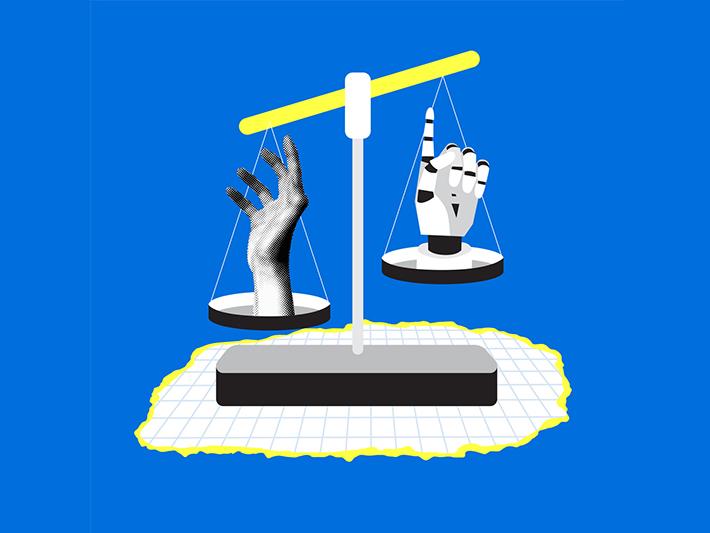
Assessments that maintain fairness and authenticity without AI
The widespread use of artificial intelligence (AI) raises concerns about equity and fairness in assessment and adds complications for how educators measure students’ understanding and effort. If students increasingly rely on AI tools to complete assignments, this could undermine the integrity of assessments, making it challenging for instructors to accurately evaluate individual capabilities and achievements.
Thus, instructors more than ever need to carefully consider how to design assessments that maintain fairness and authenticity in light of advancing technological capabilities. Here are eight assessment methods that instructors can use to address these challenges.
- Campus webinar: artificial intelligence and academic integrity
- Opinion: why I ban AI use for writing assignments
- Spotlight guide: The evolution of authentic assessment
In-person written assessments
In-person written assessments minimise the likelihood of AI assistance and allow for direct observation and interaction. They are among the most effective methods with which to evaluate students’ genuine understanding and skills, but they also require careful planning and resources to administer effectively, including ensuring a controlled environment and providing adequate supervision. Moreover, these assessments might not always fully reflect practical or real-world skills, which could be more accurately evaluated through other methods such as practical exams
Oral presentations and Q&As
Presentations provide instructors with an opportunity to evaluate students’ communication skills in real time, including their ability to articulate ideas clearly, engage with the audience and respond to questions effectively.
Complex problem-solving tasks
Tasks that require students to tackle real-world scenarios or issues involve multiple variables and uncertainties and require innovative solutions. For instance, in the field of economics, students might be asked to develop a policy to address unemployment in a struggling economy. This would involve analysing labour market trends, assessing the effectiveness of unemployment policies, suggesting new initiatives and considering the socio-economic and political implications of their proposed solutions.
Reflection essays
In this type of personal essay, the writer explores a topic from their own perspective and experiences, often examining their thoughts, feelings and learning processes related to the subject. Reflective essays involve critical analysis of personal growth and the insights gained. For example, students might be assigned a task to write a reflective essay on their experience attending an economics seminar or conference. They would reflect on the keynote speeches, panel discussions and interactions with industry experts, discussing how these experiences have deepened their understanding of economic theories and current issues.
Reflective essays can be time-consuming for instructors to mark. However, to manage marking effectively, instructors should develop clear rubrics, limit essay length, provide selective feedback, use technology tools and incorporate self and peer assessments. Clear rubrics that evaluate criteria such as depth of reflection, connection to course content, critical thinking, clarity and organisation, and evidence of personal growth will help instructors to grade personal reflection effectively. This approach ensures consistency and fairness, allows for meaningful feedback and focuses on the reflective process rather than just the content of the reflection.
Debates and discussions
Structured forms of communication such as debates and discussion require individuals or groups to present arguments, counter-arguments and rebuttals on specific topics or issues. For example, students might be assigned to participate in a debate or discussion on the ethical implications of AI in society as part of their assessments.
Project-based assessments
Project-based activities or tasks assess students’ knowledge, skills and competencies from start to completion. Students might be tasked with creating a business plan for a start-up company, which includes conducting market research, developing financial projections and formulating effective marketing strategies. In such assessments, AI detection software should be used alongside designing unique and context-specific assignments to ensure authenticity.
Case studies
Detailed and in-depth examinations of a particular event, project or phenomenon within its real-life context assess students’ ability to critically analyse complex issues, apply theoretical knowledge to practical situations and derive evidence-based insights. For example, students might study the integration experiences of international students at a local university, examining cultural adjustment challenges, social interactions with domestic students and access to support services. In the example, AI might struggle to analyse qualitative data such as personal experiences and social interactions, because it lacks the subjective judgement and detailed understanding required to interpret these complex, context-specific situations accurately.
Progressive assessments and defence
Assessing students’ progress over time ensures a comprehensive evaluation of their understanding and application of course material as these develop. Instead of focusing solely on the final product, this method drops in at regular checkpoints, where students must submit portions of their work and defend their understanding and decisions. This ongoing engagement helps maintain academic integrity, even if students use AI tools, as it requires students to regularly demonstrate their understanding and involvement through stages of the assignment. This process makes it clear that the final submission reflects their own work and insights rather than being solely based on AI-generated content.
Keep the focus on learning
In summary, these assessment methods can significantly reduce AI’s usefulness and therefore students’ likelihood of seeking its assistance. They support a more authentic evaluation of students’ abilities and understanding and promote a fairer and more equitable academic environment.
Having said that, the primary focus of any assessment method should not solely concentrate on evaluating how students complete tasks without the aid of AI. Instead, it should focus on measuring student learning by evaluating whether they have achieved the outcomes and objectives of a course or programme. It would be optimal to combine both objectives. After all, an assessment that does not focus on measuring student learning is pointless, even if it is designed to prevent students from using AI.
Temesgen Kifle is a lecturer in the School of Economics at the University of Queensland.
If you would like advice and insight from academics and university staff delivered direct to your inbox each week, sign up for the Campus newsletter.




